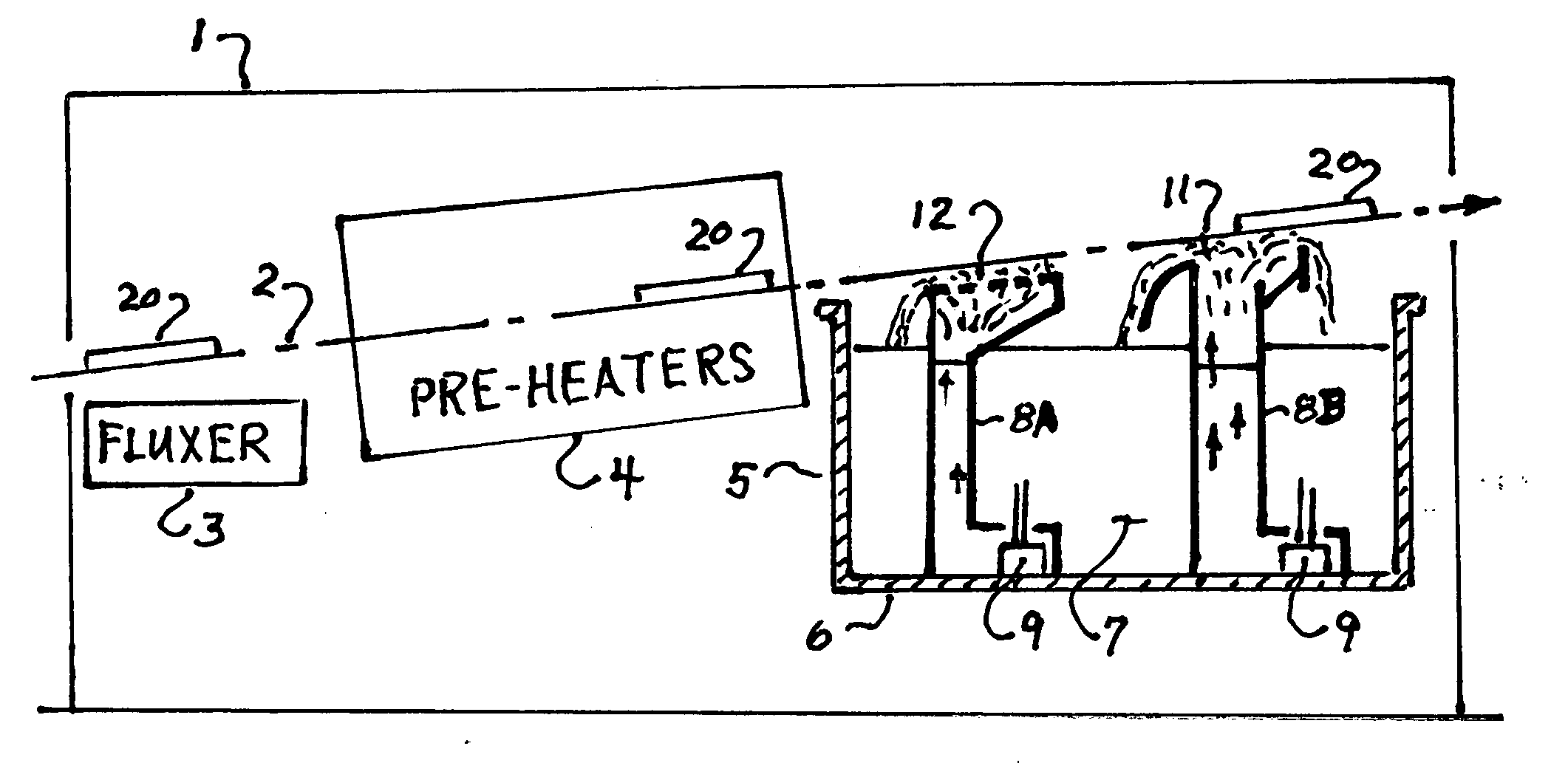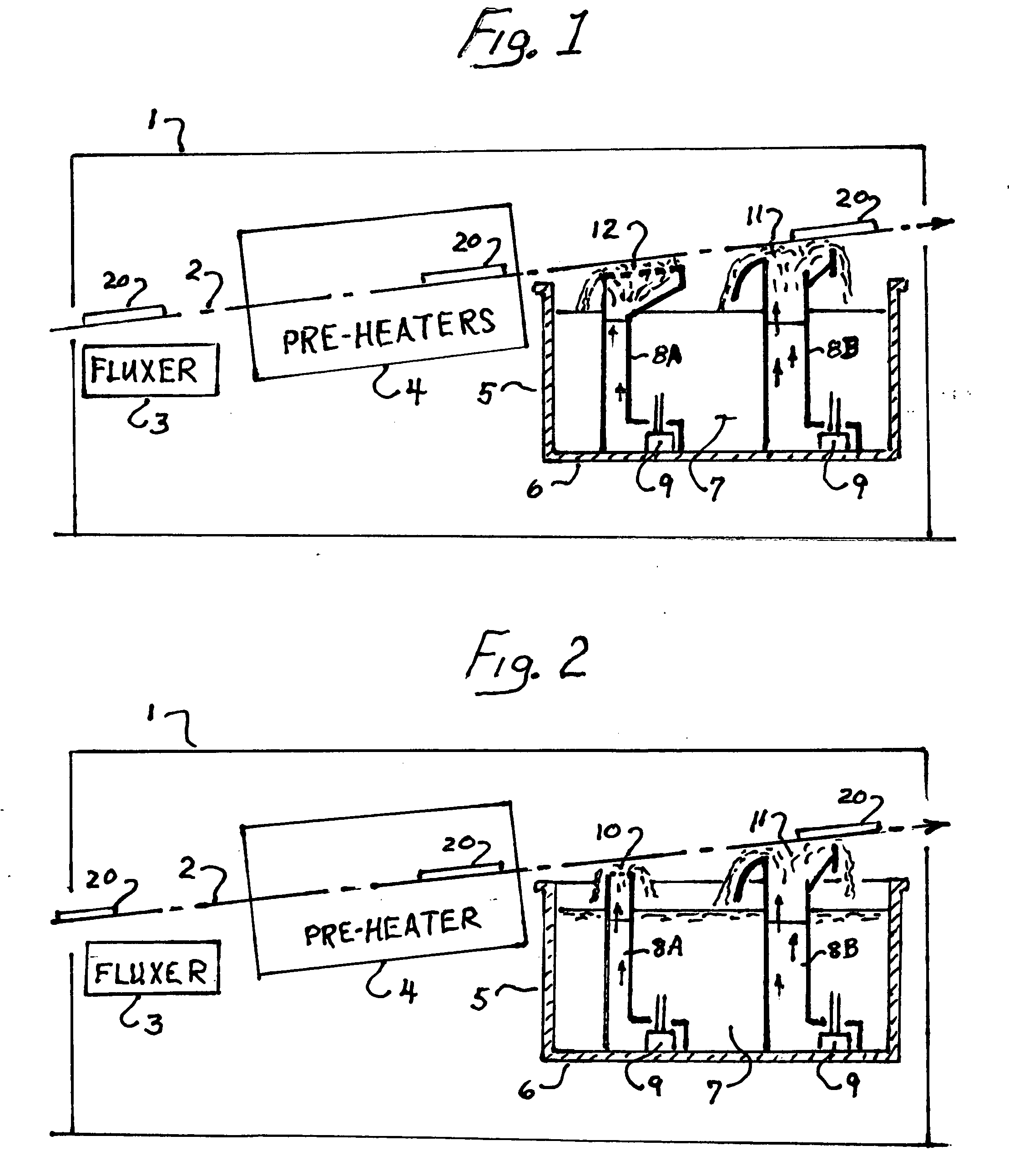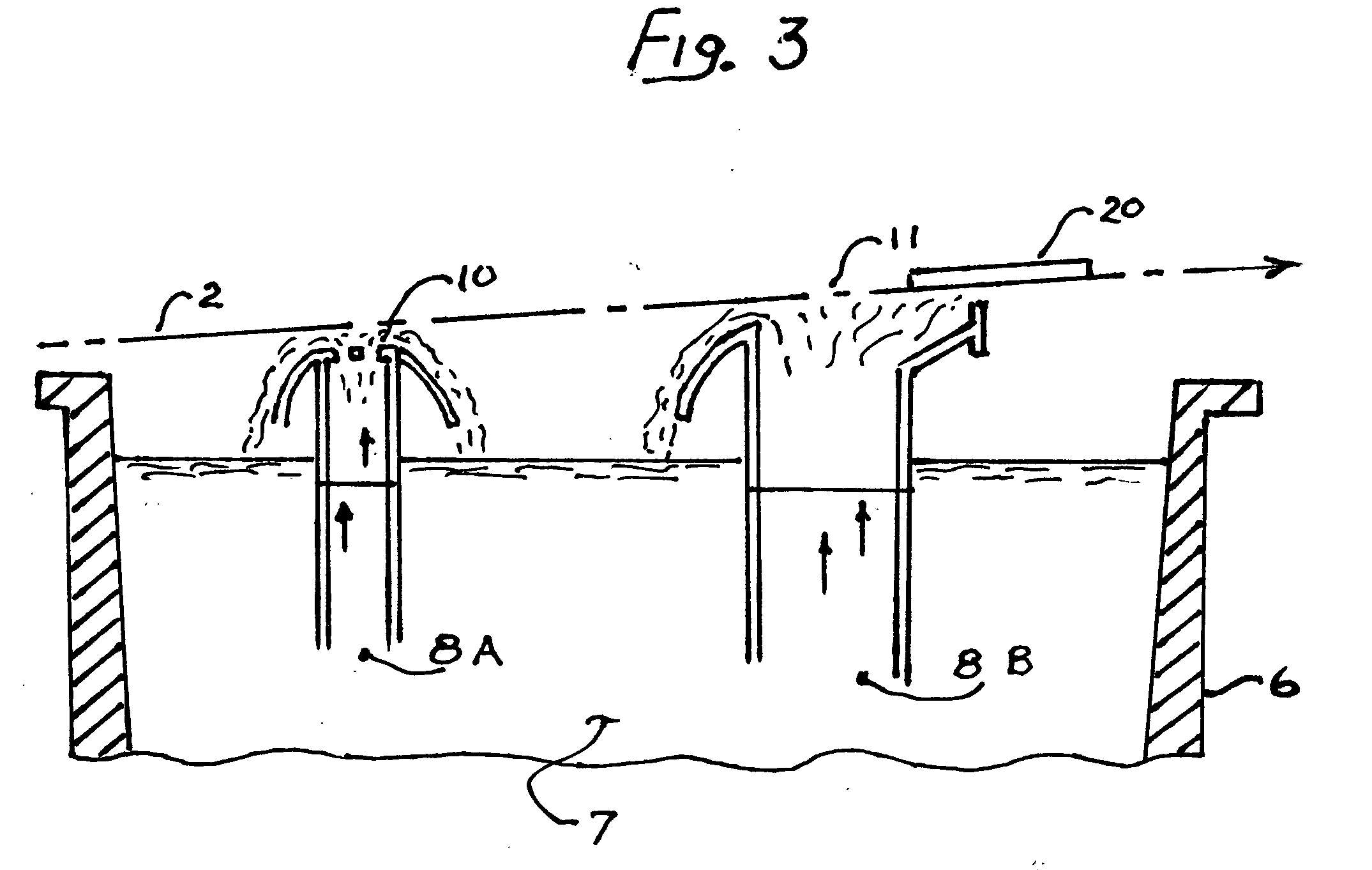Wide wave apparatus for soldering an electronic assembly
a technology of electronic assembly and wave wave, which is applied in the direction of soldering apparatus, manufacturing tools, solder feeding devices, etc., can solve the problems of increasing the complexity of the product to be wave soldered, the difficulty of current wave soldering machines and processes in overcoming the fundamental lead-free alloy attributes, and the inability to meet the requirements of wave soldering, etc., to achieve the effect of improving the wave soldering capability, reducing defects, and improving throughput speed
- Summary
- Abstract
- Description
- Claims
- Application Information
AI Technical Summary
Benefits of technology
Problems solved by technology
Method used
Image
Examples
Embodiment Construction
[0028]This invention is not limited in its application to the details of construction and the arrangement of components set forth in the following description or illustrated in the drawings. The invention is capable of other embodiments and of being practiced or of being carried out in various ways. Also, the phraseology and terminology used herein is for the purpose of description and should not be regarded as limiting. The use of “including,”“comprising,”“having,”“containing,”“involving,” and variations thereof herein, is meant to encompass the items listed thereafter and equivalents thereof as well as additional items.
[0029]Starting with FIG. 1 and FIG. 2, the only difference in the wave solder process is by installing the invention 12 as the first solder wave 10 located in the solder pot 6. The machine system 1 is not otherwise affected. Electronic substrate 20 to be soldered, are put on the machine conveyor 2. The conveyor 2 carries the substrate 20 over the flux module 3, thro...
PUM
| Property | Measurement | Unit |
|---|---|---|
| Length | aaaaa | aaaaa |
| Length | aaaaa | aaaaa |
| Pressure | aaaaa | aaaaa |
Abstract
Description
Claims
Application Information
 Login to View More
Login to View More - R&D
- Intellectual Property
- Life Sciences
- Materials
- Tech Scout
- Unparalleled Data Quality
- Higher Quality Content
- 60% Fewer Hallucinations
Browse by: Latest US Patents, China's latest patents, Technical Efficacy Thesaurus, Application Domain, Technology Topic, Popular Technical Reports.
© 2025 PatSnap. All rights reserved.Legal|Privacy policy|Modern Slavery Act Transparency Statement|Sitemap|About US| Contact US: help@patsnap.com



